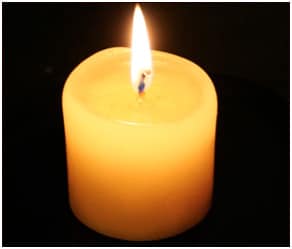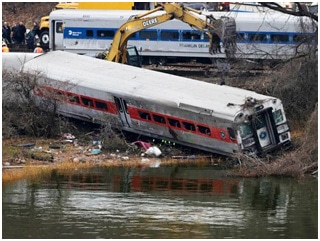 Last month’s blog post asked whether your utility could be headed for a culture-based disaster. To help you answer that question, we proposed a simple and easy, albeit qualitative, diagnostic tool: is there a gap between what your utility says about customers, and what it does? Most utilities “talk the talk” about customers, stakeholder engagement, transparency, the importance of communications, and so on. But not everyone “walks the talk.”
Last month’s blog post asked whether your utility could be headed for a culture-based disaster. To help you answer that question, we proposed a simple and easy, albeit qualitative, diagnostic tool: is there a gap between what your utility says about customers, and what it does? Most utilities “talk the talk” about customers, stakeholder engagement, transparency, the importance of communications, and so on. But not everyone “walks the talk.”
In this blog, I offer an equally simple and easy, albeit qualitative, suggestion to ward off culture-based problems in your utility: opening all of your internal meetings with a “customer minute,” akin to the “safety minute” that begins so many meetings at so many utilities.
Let’s think about the role safety plays in your utility’s culture. As a rule, utilities strongly and consciously support safety as a bedrock value. Working with electricity or natural gas can be dangerous, and field employees are exposed to many life- and limb-threatening hazards during the course of their work day. But administrative workers face safety issues, too—safety’s not just for forklift operators or construction personnel. Think of the injuries, and the litigation, and the bad press, prevented because your utility has made safety a bedrock value.
In a recent client project, I was impressed by my client’s efforts to make their workplace safer. I conducted separate interviews with five managers at the utility, and they all said, in effect, “working safely is, first and foremost, the right thing to do. Secondly, it makes a ton of financial sense!”
Utilities demonstrate, and reinforce, their views on safety in a number of ways and on a regular basis. If your utility is like most, it begins each and every meeting with a brief discussion of safety. Whether this is a tail-gate meeting of field workers or the accounting department’s weekly staff meeting, the leader of the meeting begins by asking the attendees to share a brief thought on safety.
This is one of the simple yet powerful ways a utility conveys safety concerns are a fundamental part of the way they do business. The “safety minute,” sometimes called a “safety briefing,” is a powerful cultural tool because it is ubiquitous. It sends the message, “Safety is everyone’s job and we’re going to discuss it on a regular basis to make sure employees understand our expectations.”
In the same way that utilities need safe work practices, they also need customers. But the actions of some utilities (including their budget decisions) make you wonder if some utilities think they don’t have to worry about customers.
Here’s a simple test: what topicsdominates the conversation at internal meetings? Is it whether we should install scrubbers on this power plant, or how an outage affected a particular customer’s home or business? Divergence between internal conversations and your organization’s expressed values could be an early warning ofculture-based trouble.
 There’s an easy way to separate the “talk” from the “walk.” Begin your meetings with a brief thought about actual customers. You can call it a “customer minute” or a “customer briefing.” What’s important is that participants are encouraged to share an insight or a vignette about how your customers are affected by what your utility does or does not do. In that way, you will be lighting a candle, not just cursing the darkness.
There’s an easy way to separate the “talk” from the “walk.” Begin your meetings with a brief thought about actual customers. You can call it a “customer minute” or a “customer briefing.” What’s important is that participants are encouraged to share an insight or a vignette about how your customers are affected by what your utility does or does not do. In that way, you will be lighting a candle, not just cursing the darkness.
By discussing customers openly, and connecting internal actions with external consequences, you will be making customers a conscious part of everyone’s work in the same way that safety is part of everyone’s work. You also will quickly expose any gap between what your utility believes and what it does.
Communications Tip of the Month: A utility’s success or failure is largely determined by its culture. Your culture determines how you treat your customers. If your utility seems to have lost sight of the importance of customers, try opening your internal meetings with a “customer minute.” If those efforts are shot down, it may be time for you to connect the dots.
It doesn’t take a cultural anthropologist to know this can be risky. You can’t know in advance where this step could take you. No organization likes to be called out, and an organization can police behavior it doesn’t like in a variety of ways. If you and your organization are at odds on fundamental cultural issues, you need to think very carefully about taking this step.
If you decide to take this step, you will be operating as a patriot, not a revolutionary. You will be driven by a deep desire to see your utility succeed and flourish as its external market changes. You will be raising the kinds of questions that are rarely raised — until it is too late.
Paradoxically, businesses tend to wither and die because they excelled in one area, but that excellence created blind spots in other areas. The collective internal thought process goes something like this: “We’re really good at what we do, and that excellence will sustain us in the future the way it has in the past.”
And that may be true, as long as the future doesn’t differ from the past. But we all know that’s not the way things work. Just ask companies like Pan Am, Digital Equipment Corporation (DEC) and Dean Witter Reynolds. They all disappeared when their markets, or the technologies underpinning their businesses, shifted. All were really good at what they did, until their industries changed dramatically. Decades of success made them unwilling and unable to change with the times.

A year ago, the Edison Electric Institute (EEI) released Disruptive Challenges: Financial Implications and Strategic Responses to a Changing Retail Electric Business. That report, which continues to spark anxious discussions among utility executives, focused on the technological, policy and market challenges posed by declining costs for distributed generation (DG), regulatory support for energy efficiency and conservation programs, and the declining cost of natural gas. In other words, challenges aimed directly at the heart of the utility business model: centralized, large-scale generation and a monopoly in transmission & distribution. Hello, Pan Am! Nice to see you, Dean Witter. What’s up, DEC?
The heart and soul of any utility’s response to fundamental changes in its market has to start with culture and customers. If your utility doesn’t give its customers a reason to look for alternatives, they won’t seek them out. If your culture has customers at the core of everything it does, then you have nothing to fear. Your organization will find a way to zig when customers zig. It will morph with the times.
Utilities receptive to opening meetings with a thought about customers should be more inclined to invest in customer communications and marketing activities. Their actions will be congruent with their values and their verbiage. It’s not a gimmie, but it may be a good sign.
On the other hand, if your manager shoots down your attempt to open meetings with a customer vignette, or if attendees at a meeting respond with awkward silence, don’t panic — but don’t ignore it either. Initial hesitancy could be a sign that your culture isn’t quite sure how to respond to something new. Remember, most organizations don’t see “new” as necessarily “better.”
Maybe you’re fortunate enough to work for a utility willing to try something new. If so, speak up and put the “customer minute” out there.
 But after a while, you may conclude that your utility has gotten comfortable saying one thing and doing another. That’s an important signal, particularly if you believe that your organization exists to serve customers. If you have concluded your organization has a large cultural disconnect when it comes to customers, including communicating with them, stop lighting candles and stop cursing the darkness. Consider leaving – on your terms and your timeline. Before the train goes off the rails.
But after a while, you may conclude that your utility has gotten comfortable saying one thing and doing another. That’s an important signal, particularly if you believe that your organization exists to serve customers. If you have concluded your organization has a large cultural disconnect when it comes to customers, including communicating with them, stop lighting candles and stop cursing the darkness. Consider leaving – on your terms and your timeline. Before the train goes off the rails.

